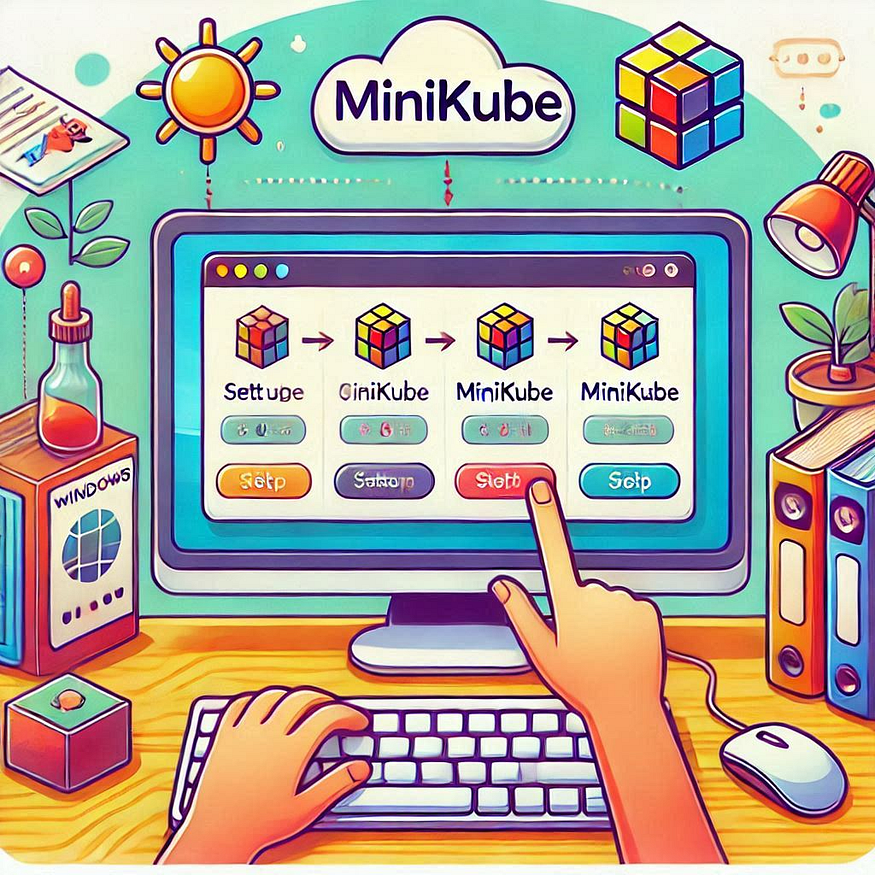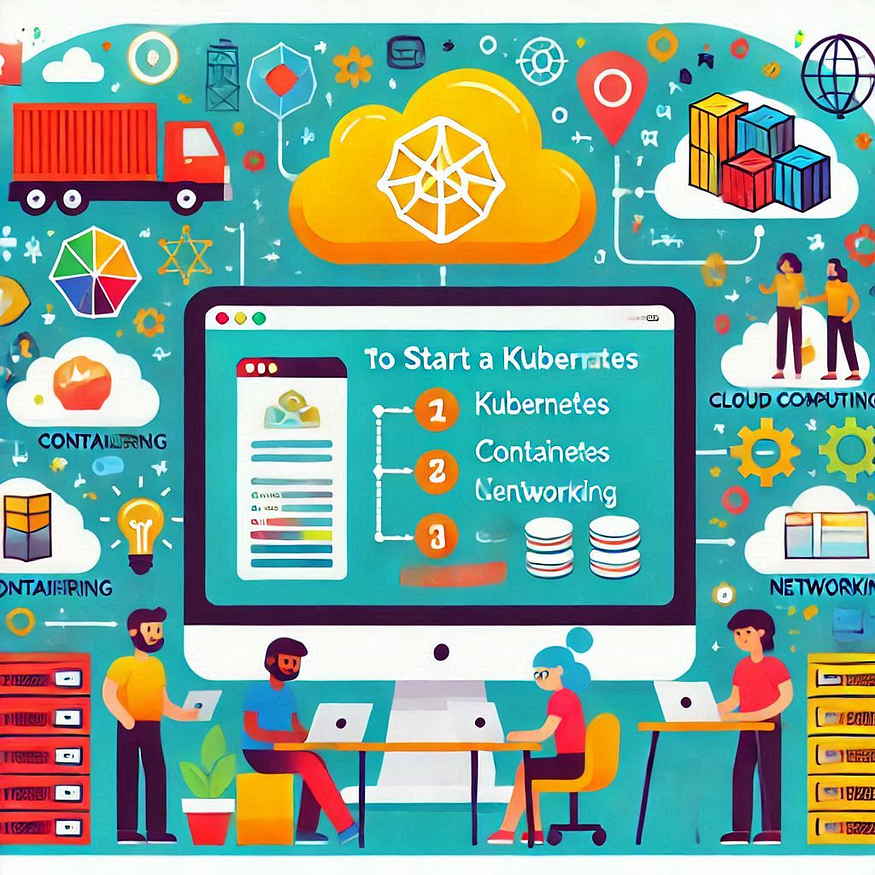
Introduction: Ready to Build Your Own Kubernetes Cluster?

If you want to run Kubernetes locally, Minikube is the ultimate solution! It allows you to create a single-node Kubernetes cluster on your local machine, making it the perfect tool for development and testing.
In this guide, we’ll walk you through the steps to install Minikube on Windows and Linux, and get your local Kubernetes cluster up and running with kubectl configured to manage it. Whether you’re on Windows or Linux, we’ve got you covered with clear steps for both platforms.
Part 1: Minikube Setup on Windows

Step 1: Download and Install Minikube
Option 1: Manual Installation via .exe Download
- Download the latest Minikube installer for Windows:
- Navigate to the Minikube releases page and download the
.exefile for Windows.
2. Run the installer to begin the setup process.
Option 2: Install Using PowerShell
If you prefer to use PowerShell for a quicker installation:
- Create a Minikube directory:
New-Item -Path 'c:\' -Name 'minikube' -ItemType Directory -Force
- Download the Minikube .exe file:
Invoke-WebRequest -OutFile 'c:\minikube\minikube.exe' -Uri 'https://github.com/kubernetes/minikube/releases/latest/download/minikube-windows-amd64.exe' -UseBasicParsing
Step 2: Add Minikube to Your PATH
To use Minikube from any directory in the Command Prompt, you need to add its executable to your system PATH.
- Set the PATH variable:
Run the following PowerShell script to add Minikube to your system’s PATH:
$oldPath = [Environment]::GetEnvironmentVariable('Path', [EnvironmentVariableTarget]::Machine) if ($oldPath.Split(';') -inotcontains 'C:\minikube'){ [Environment]::SetEnvironmentVariable('Path', $('{0};C:\minikube' -f $oldPath), [EnvironmentVariableTarget]::Machine) }
2. Make sure to run PowerShell as Administrator for these changes to take effect.
Part 2: Minikube Setup on Linux

Step 1: Download and Install Minikube
- Download Minikube binary:
Open a terminal and run the following command to download the latest stable Minikube release for Linux:
curl -LO https://storage.googleapis.com/minikube/releases/latest/minikube-linux-amd64
2. Install Minikube:
Move the downloaded binary to a directory in your PATH and set it as executable:
sudo install minikube-linux-amd64 /usr/local/bin/minikube && rm minikube-linux-amd64
Step 2: Verify the Installation
- Check Minikube version:
Run the following command to confirm Minikube is installed:
minikube version
If everything is installed correctly, you’ll see the version information for Minikube.
Part 3: Start Your Kubernetes Cluster

Once Minikube is installed on either Windows or Linux, it’s time to start your Kubernetes cluster.
Starting Minikube
- Run the following command to start Minikube:
minikube start
2. For Docker driver (if you’re using Docker for virtualization), use:
minikube start --driver=docker
Minikube will now download the necessary components and start your local Kubernetes cluster.
Part 4: Configure kubectl to Communicate with Your Cluster

Once Minikube is running, you’ll need to configure kubectl to communicate with your Kubernetes cluster.
- Get the kubeconfig file from your Minikube setup:
On Linux: The configuration file will be located in
~/.kube/config.On Windows: The configuration file will be located in
%USERPROFILE%\.kube\config.
2. Minikube automatically configures the kubeconfig file, but if you need to manually set it, you can use this command to retrieve it from Minikube:
minikube kubeconfig
3. Test the connection to your cluster by running the following command:
kubectl get nodes
If everything is set up correctly, you should see a list of nodes in your cluster. Your Minikube installation is now fully configured and ready for use!
Troubleshooting Tips
Minikube fails to start:
If Minikube doesn’t start, check the drivers page for troubleshooting and ensuring you have a compatible container or VM manager.kubectl cannot connect:
Ensure your kubeconfig file is correctly set and that yourkubectlis pointing to the correct cluster context.Permissions Issues (Linux):
If you encounter permissions issues with Minikube or kubectl, make sure you are not running as root. Always usesudoonly when necessary.
Conclusion: Unlock Kubernetes Power Locally
Now that Minikube is running smoothly on your Windows or Linux machine, you’re equipped to explore the power of Kubernetes locally. From managing containers to deploying applications, Minikube is your go-to tool for testing and learning Kubernetes without the overhead of a full-scale cloud cluster.
Ready to dive deeper into Kubernetes? Learn more about deploying applications and managing Kubernetes resources in future tutorials! 🌟
Thank you for taking the time to read my blog. Your feedback is immensely valuable to me. Please feel free to share your thoughts and suggestions.
